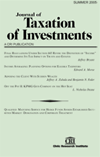A Credit Default Swaps Primer Uses, Mechanics, Benefits, Risks, Regulation, and Developments
Author: Matthew F. Kluchenek.; Nicole M. Kuchera.
Source: Volume 27, Number 01, Fall 2009 , pp.3-46(44)

next article > |return to table of contents
Abstract:
Prior to the financial market turmoil that began in 2007, credit derivative instruments generally were met with overwhelming praise from market participants. To many, credit derivatives helped drive companies to efficiencies and sophistication unimaginable only two or three decades ago. The OTC credit derivative market grew rapidly, in part, because the markets could function in and across jurisdictions and currencies without significant regulatory oversight. In particular, credit default swaps (CDSs) provided a flexible and innovative tool to hedge, speculate, and arbitrage credit counterparty risks. Critics of the now huge CDS market, however, claim that the market became too large without proper oversight and that, because most OTC contracts are privately negotiated, the market lacked transparency and its growth posed systemic risk to the financial system. Against this backdrop, this article examines CDSs in four parts. The first part of the article provides a primer on CDSs and examines their purposes, uses, and mechanics. Thereafter, the article explains the regulatory treatment of CDSs prior to 2007, when the financial market turmoil began to gain steam. Next, the article delves into the disparate proposals to regulate or oversee the CDS market and, more generally, the entire OTC market. Finally, the article offers the authors’ conclusion with respect to the likely future regulatory treatment of CDSs.Keywords: Credit Derivatives; OTC derivative markets; Regulation;
Affiliations:
1: Henderson & Lyman; 2: Henderson & Lyman.